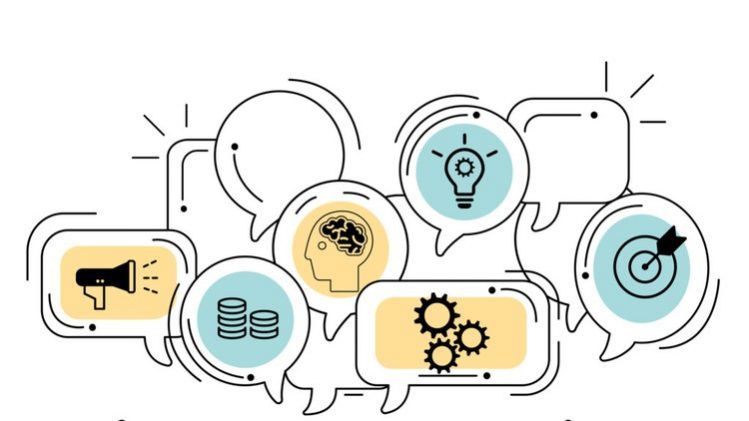
Learn how to use the main innovation management terminology and concepts.
Explain the adoption life cycle and innovation adoption at the individual level.
Define creativity and explain how creativity can be stimulated.
Rcognise and describe three types of idea management systems.
Explain what an innovation strategy is and why it is important.
Describe what a product portfolio is in detail.
Explain how innovation projects should be selected and managed.
Explain the importance of teams, team structures and networks for innovation.
What is innovation management? How do firms bring in new business models and get new products and services to the market? Go on an eight-week journey through innovation management concepts, theories of idea generation, selection, strategy formulation, and implementation in this course of Innovation Management. In it, you will also learn the tools for implementing innovation projects yourself.
Guided by world-class academics, you will develop an innovative mindset and expertise in how firms successfully create new ideas for marketing new products. The syllabus also includes sessions about innovation strategy, idea management, and social networks.
During this course, you will learn:
Section -1 Introduction
After this week’s studies, you will understand the meaning of innovation and innovation management. Also, you will learn to identify and differentiate between various types of innovation. As a result, you will become acquainted with basic terminology that will help you to better process and understand the course content of the following weeks.
Section -2 The Adoption of Innovations
You will learn to understand how innovations diffuse in society. You will be able to describe the adoption life cycle and discriminate between the various adopter groups. You will also learn what it takes for someone to adopt something new. Altogether, you will gain a better understanding of what determines whether and how fast people adopt innovations.
Section -3 The Fuzzy Front-End – Creativity
In a knowledge-based and innovation-driven business environment, creativity is an essential capability if an organization is to gain a sustainable competitive advantage. All innovations begin with creative ideas, and creativity is also needed during the entire innovation process. So, it is imminent that employees in any job and at any level of the organization can contribute to innovation with creative ideas. This module comprises four instruction videos, one interview with a creativity consultant, and two assignments. After this module, you will understand what creativity is and how you, other people, and groups become more creative: crucial knowledge for any manager that wants to excel in innovation!
Section -4 The Fuzzy Front-End – Idea Management
Organisations receive many new ideas from employees, suppliers, and customers. But they often do not realise the innovative potential of these ideas because they fail to properly manage them. By studying this module and doing the associated exercises, you will understand the basic principles of idea management. You will be able to differentiate between three types of idea management programmes and learn about their different characteristics, advantages and disadvantages. In addition, you will learn about two general challenges that many idea management programmes face: how to motivate people to continuously submit ideas and how to improve the quality of ideas. A better understanding of the principles, differences, and challenges of idea management will help you design appropriate idea management programmes that turn new ideas into successful innovations.
Section -5 Strategy – Innovation Strategy
Innovating is no longer a choice, but a business imperative. This imperative demands a clear strategic direction for the innovation activities. This week will introduce the central challenges and available solutions to develop and execute an innovation strategy. In addition, you will study the typologies and evolution of change in the business environment, and discuss tools that can help you make sense of your business environment. An important element in this module is that change does not always occur independent of the firms, but firms are both subjects and agents of change. In particular, you will discuss how firms can shape their environment through disruptive innovations.
Section -6 Strategy – Portfolio Management
This week’s module is about portfolio management, which covers how to implement your innovation strategy. We introduce the concept of the funnel. We show two alternative funnels, reactive and proactive, and we explain the differences. You will explore three practical examples of the proactive process: Ericsson, Lego and Philips. Next, we will elaborate on an important consideration in portfolio management, which is protecting intellectual property. Finally, you will learn two specific tools that you can use in portfolio management. The first is a financial tool, the real options method, and the second one is the planning tool called ‘road mapping’.
Section -7 Execution – Implementing Innovation
By studying the materials for this week you will learn how innovation projects can be managed. You will understand and describe the different elements of stage-gate models. Also, you will familiarise yourself with the concepts of experimentation and enlightened experimentation within the context of innovation project management. As a result, you will be equipped with an understanding of the peculiarities of innovation projects, and how companies deal with these peculiarities.
Section -8 Execution – Teams and Networks
How do teams and social networks affect the development and the sharing of knowledge and innovation? The module will consist of four videos that will help you develop conceptual and practical knowledge on these topics. After a brief introduction of what teams and social networks are – and what they are not – you will learn how these everyday concepts relate to innovation in organisations. You will explore key concepts about teams and networks, and become more aware of how you can generate and transmit innovation in your work activity.






